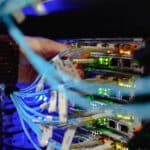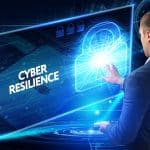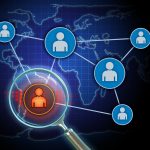Building customer communities to accelerate innovation and growth

Increasing customer loyalty in today’s difficult economic times might seem impossible, but the rewards are well worth the extra effort and commitment. According to Forbes, customer-centric companies are 60 percent more profitable than companies that don't focus on their customers. This statistic on its own is probably enough to bring customer satisfaction and retention to the forefront of most C-suite agendas, if it wasn’t a priority already. However, there’s much more value that happy customers can bring to a business than profit alone.
By creating an engaged customer community, companies can also become more innovative and competitive, speed up new product development, and grow their customer base through referrals. Building such a community requires planning and patience, and is a balancing act between efficiency and resources. Its success relies on defining the best communication channels, at the right cost, to connect with customers.
Guarding the digital generation: Enhancing online safety through age verification

With the influx of next-gen technologies like generative AI coupled with the rapid proliferation of interactive platforms and digital media, it’s becoming increasingly challenging to protect minors from harmful and explicit content. The sheer volume of information and digital functions today makes it extremely difficult to ensure children and young adults are only consuming age-appropriate content.
Regulating this colossal mass of internet content is a herculean task, which is often deemed impossible. Rather, the most effective and simple solution for creating a safe online landscape is age verification.
Countering the rise of AI criminals

As generative AI tools continue to expand, new doors are being opened for fraudsters to exploit weaknesses. Have you experimented with generative AI tools like ChatGPT yet? From beating writer’s block to composing ad copy, creating travel itineraries, and kickstarting code snippets, there’s something for everyone. Unfortunately, "everyone" includes criminals.
Cybercriminals are early adopters. If there’s a shiny new technology to try, you can bet that crooks will explore how to use it to commit crimes. The earlier they can exploit this technology, the better -- this will give them a head start on defenses being put in place to block their nefarious activities. If tech helps boost the scale or sophistication of criminal attacks, it’s extra attractive. It’s no wonder cybercriminals have been loving tools like ChatGPT.
Evolution of cloud data protection: Why your business needs a Data Command Center

Businesses face increasing hurdles when protecting sensitive data in today's complex digital, hybrid, and multi-cloud environments. The truth is that historically, data security has been the core challenge that enterprises have been aiming to tackle given the fact that data breaches have become increasingly common as attackers deploy more sophisticated techniques to cause extensive damage to companies, including monetary losses, reputational harm, and legal penalties.
In this context, deep and proactive data insights are required -- knowing where sensitive data resides or who has access to it is no longer a ‘nice-to-have,’ but a must. However, steps adopted to mitigate these challenges still have a lot to do with data security as a silo, while not necessarily as part of a broader understanding of how data is being used or how it needs to adhere to regulations across the entire organization, which usually comes as an afterthought.
Anomaly Detection: Four steps to avoiding unforeseen cloud costs

Data volumes are simultaneously exploding and migrating, making it difficult for businesses and their CIOs to both monitor and secure across their environments. With so many moving parts in the cloud, it can often run away with businesses because as it expands to handle the data that it’s given, so does its cost. This is both a blessing and a curse, as flexibility is a vital attribute of a successful business, but it means that unanticipated cloud costs are common and hard to track.
Anomalous, unexpected costs can crush businesses’ confidence in their budgets and forecasts, impact their burn rate and make it difficult to understand their wider spending patterns. Yet, despite this, many wait until their bill arrives before reacting. To avoid these unpleasant surprises, which can be caused by a repository error, crypto mining incident or simply because servers have been spun up and forgotten about, businesses can turn to Anomaly Detection tools with great success.
The future of identity is self-sovereignty

It’s no secret that Americans are becoming increasingly concerned about their digital identities.
Take the recent case in Louisiana, where a whopping 6 million public records were exposed as part of a global attack on third-party file transfer app MOVEit. The attack made users more wary of trusting their data to often-obscure third parties. A recent survey, conducted across 1,000 U.S. consumers by Thales found that 44 percent are afraid their identity will be stolen in a cyberattack, and a quarter have no confidence in the protection of their personal data.
The importance of work-life balance for mainframe professionals: Nurturing talent and supporting new starters

In today's fast-paced and 24-hour world, achieving a healthy work-life balance has become increasingly challenging for professionals across various industries. However, it is particularly crucial for individuals starting their careers in the mainframe technology field. Maintaining a good work-life balance is vital for new entrants in the mainframe industry, but equally important is the need to put robust support systems in place for new starters.
According to research from the mental wellbeing platform Yerbo, 40 percent of IT professionals are at high risk of burnout. Success in IT is often viewed through the prism of a ‘hustle culture’ that prizes long hours and an always-on mentality as the hallmarks of success. That is particularly true for the mainframe, given its criticality within businesses. In a field dominated by experts with decades of experience, new entrants can feel pressured to constantly go above and beyond, abandoning any work-life balance and striving to meet the standards of their more experienced peers. Unfortunately, this mindset can be detrimental to the well-being and productivity of new professionals entering the field.
Understanding how on-premises system costs compare to cloud-based solutions

In today’s uncertain economic environment, understandably every purchase decision needs to be thoroughly analyzed and the cost to the business clearly understood. With so many organizations migrating to the cloud, it is important to understand not only the cost of migrating systems but also the longer-term costs.
IT managers must understand the main business driver(s) for moving their organization to the cloud, and those drivers need to be reconciled with business application requirements. Some applications will be CPU-intensive, others memory-intensive, while others are cost-sensitive. Likewise, understanding whether this is the best short and long-term solution for the business as well as the total cost of ownership (TCO) and predicted return on investment (RoI) is important.
Building cyber resilience in an age of AI

Cybersecurity remains one of the most important business investments amid new threats, including those presented by Generative AI. However, as businesses invest in ways to mitigate cyber risk, many are uncertain if the increased spending is helping their organizations bolster their cyber stance -- often because they lack proof.
As new research highlights that fewer organizations feel confident that their business can withstand a cyber attack, how can businesses build and prove their organization-wide preparedness for threats?
Driving a people-first approach to digital adoption

There’s no doubt that change is stressful; it’s how organizations handle it that makes all the difference. The key to making it a success comes down to reducing as much friction as possible through understanding the customers day to day use cases, creating a sound communication plan, and providing a realistic timeline for delivery.
If you’re looking to implement new technologies, that’s where a robust user adoption strategy needs to come in. Its role is to lay the groundwork for a positive experience, while mitigating the negative connotations that come with change. In doing so, it will help employees to embrace new tools, use them to their full potential and ultimately improve working practices. A successful user adoption strategy starts with understanding the problem, the people, the processes and how the new ways of working are going to affect the user -- before the change happens. This helps to ensure that the roll-out is smooth, cohesive and everyone has the same expectations.
Mitigating the three types of non-malicious insider risk

Some people do not see the big picture, thinking there is only one type of insider risk (i.e. malicious). As a result, they often think that mitigating insider risks can be done with a one-size-fits-all approach. That is a fallacy. To counter that myth, let's shed a little light on the different types of non-malicious insider risks and what companies can do to prevent them from becoming an insider threat (i.e. malicious).
There are three different types of non-malicious insider risks, and each one requires a different approach to mitigation. According to MITRE, the three types of non-malicious insider risks are:
What is Software Asset Management? And why should you care?

So much software, so little oversight! That may be how many IT departments are feeling lately. According to MarketsAndMarkets, the global Software Asset Management (SAM) market size is expected to grow at a Compound Annual Growth Rate (CAGR) of 18.1 percent to $4.8 billion by 2026, up from $2 billion in 2021. Gartner also reported that enterprise spending on software is projected to increase by 9.3 percent in 2023.
The rapid growth of software in the enterprise has been spurred on by several factors:
It's time to retire the old-school risk mitigation processes and embrace new fraud-proof technology

eCommerce presents merchants with an incredible opportunity to distribute their products and services and assert the global market -- but with that, the risk of fraud increases. And online fraud figures are higher than they have ever been.
Payment Service Providers (PSPs) are responsible for mitigating these risks to protect their merchants and consumers. For a long time, PSPs have relied on in-house risk departments to detect, prevent and reduce risk on behalf of their merchants.
Three trends to watch in the growing threat landscape

It’s no secret that the threat landscape is rapidly changing. Securonix Autonomous Threat Sweeper (ATS), for example, observed 1,588 global cyber threats over the past year. With new threats on the horizon daily, industries around the world are scrambling to protect their businesses. The good news is that the cybersecurity industry has been steadily evolving to meet those threats.
With increased threats comes a greater need for advanced security measures. Companies can no longer rely on the achievements of the past, which drives continuous industry innovation. This evolution fuels three key trends emerging within the cybersecurity industry to meet the needs of organizations in the growing threat landscape.
Education, not a watchdog, should power AI regulation

Earlier this year, several prominent tech leaders came together to sign a letter advocating for pausing development of advanced AI models, citing their potentially "profound risk to society and humanity”. This was swiftly followed by British Prime Minister Rishi Sunak proposing the creation of a new UK-based watchdog dedicated to the AI sector.
Although the move garnered mixed responses, an essential aspect seems to have been overlooked amid this debate -- a legislation-led institutional may not be the most effective or comprehensive approach to regulating AI.
BetaNews, your source for breaking tech news, reviews, and in-depth reporting since 1998.
© 1998-2025 BetaNews, Inc. All Rights Reserved. About Us - Privacy Policy - Cookie Policy - Sitemap.
